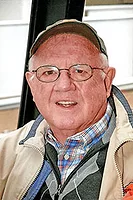American Farriers Journal
American Farriers Journal is the “hands-on” magazine for professional farriers, equine veterinarians and horse care product and service buyers.

When dealing with laminitis, most cases require a team approach between the horse owner, farrier and veterinarian. And if there is no respect or communication between you and any of the other parties, Amy Rucker maintains, you should decline to work on the horse.
The equine veterinarian from Rolla, Mo., told attendees at last winter’s Bluegrass Laminitis Conference that you should never be willing to use a treatment technique that you believe will be detrimental to the horse. “Simply decline to work on the horse,” she says. “This may seem obvious, but if someone wants to shoe a sinker with a reverse wedge pad and you don’t agree, then say no.”
She says “sneaky situations” sometimes arise, such as suggesting a “gentle trimming” on a horse that is a sinker.
“Should you express your beliefs and then ‘gently’ trim the horse, putting your name or endorsement on the work?” she asks. “Or should you state that you believe that just trimming the horse is not enough to save its life and that if they want the horse ‘gently trimmed,’ they’ll have to find another professional that believes in that method and have them trim the horse?”
Rucker admits that everyone does things differently and that you can’t be so rigid to only work with someone who does things exactly as you want them done. Yet she maintains that the result can be ineffective when a vet and farrier try to blend their techniques together.
“The trick to communication…